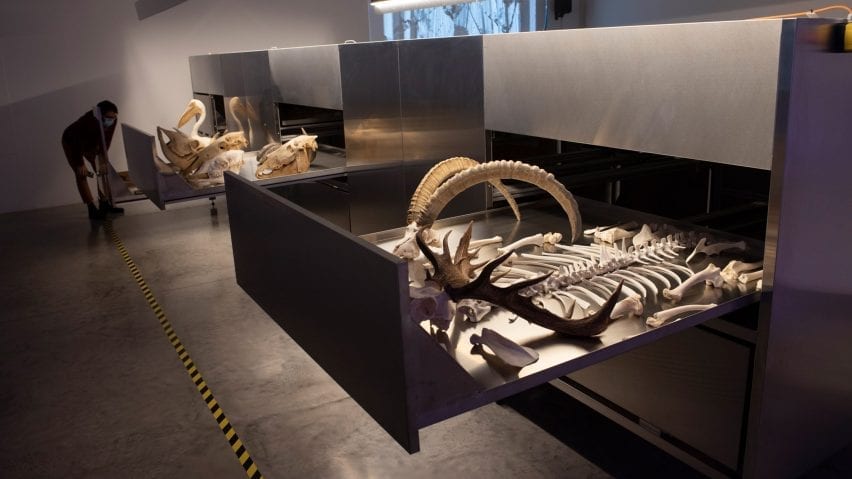
Israel puts skeletons and taxidermy on display at Venice Architecture Biennale
Israel has displayed ancient human bones and stuffed animals in mortuary-style stainless steel cabinets at the Venice Architecture Biennale to explore the impact of the country's agricultural history.
Called Land. Milk. Honey, the exhibition takes its name from the Promised Land, a biblical reference to Israel where it is described as "a land flowing with milk and honey".
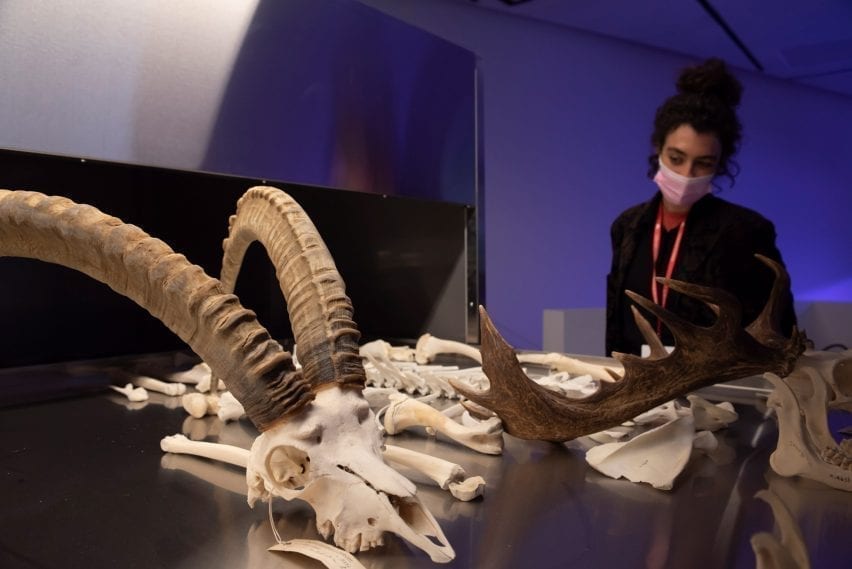
Land. Milk. Honey comprises a group of stainless steel cabinets filled with a collection of taxidermy, bones and skulls borrowed from the Steinhardt Museum of Natural History at Tel Aviv University.
This includes the remains of a woman who died in the Hula Valley some 14,500 years ago and was buried along with a dog.
Combined with explanatory archival photography, video works and an immersive sound installation, the artefacts represent how agricultural developments in Israel have threatened the local habitat and communities.
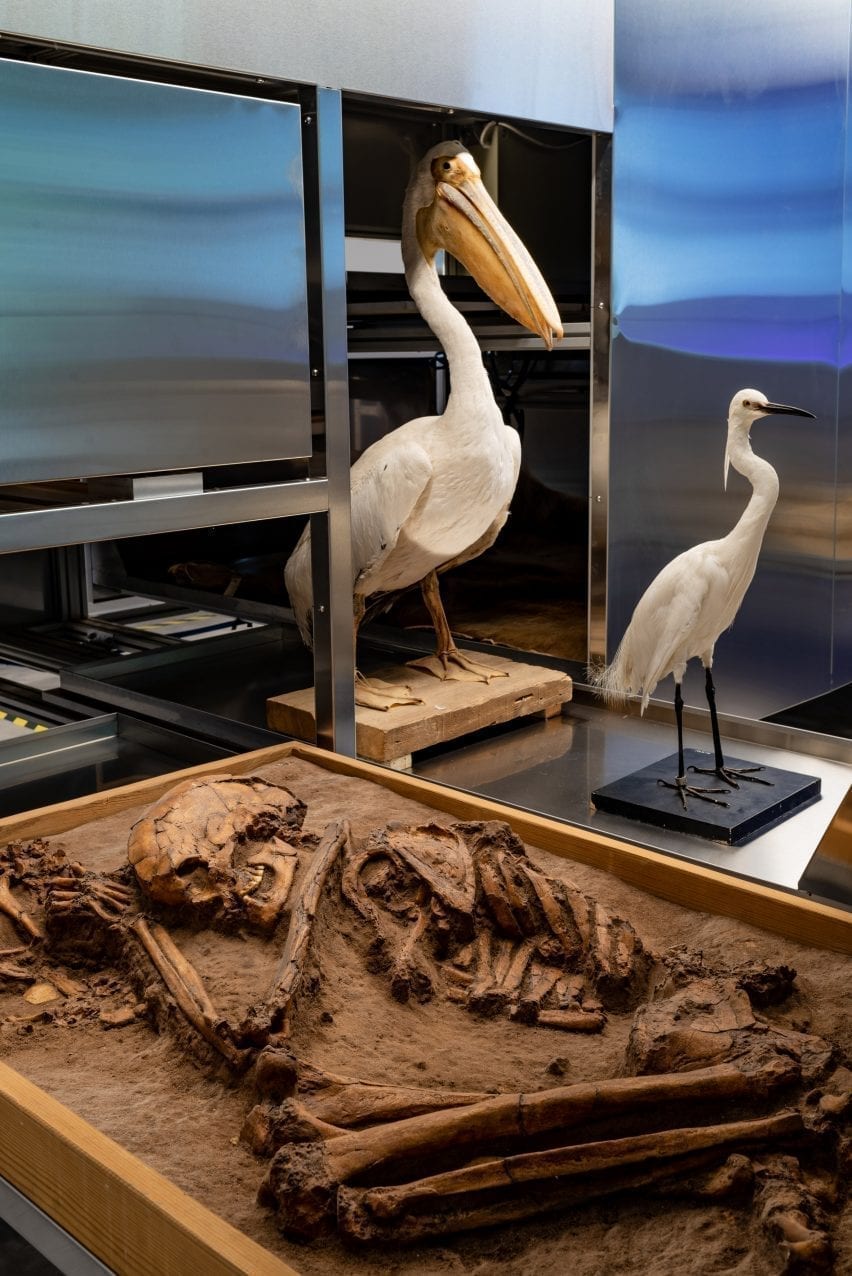
"Our goal was to produce an exhibition that is both research-based and sensorial – a world containing architectural objects, installations and the natural elements of plants and animals," co-curator Dan Hasson told Dezeen.
"Together, the works present the tension between nature and the man-made."
Israel is a major exporter of agriculture products and technologies, despite a Mediterranean climate that produces hot and dry summers that can result in water shortages.
Fundamental changes undergone by the region over time are presented through five local animals: cows, goats, water buffalos, bees and bats.
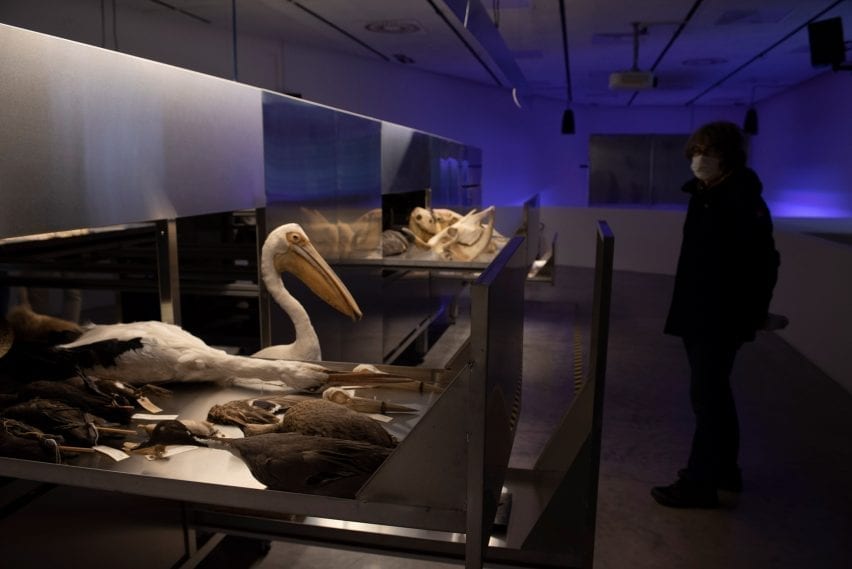
The exhibition space conjures an atmosphere of a science lab with animal remains displayed in clinical stainless steel drawers that are opened out and illuminated by moody purple lighting.
"We decided to use a single material, stainless steel, across the entire exhibition in order to tie together the very different objects, installations, specimens and mediums on display," explained Hasson.
"This was a breakthrough moment in which we understood that stainless steel, commonly used in clean environments such as kitchens, laboratories, operating rooms and morgues, could bring out the sensual qualities of the biological exhibits of our exhibition," he continued.
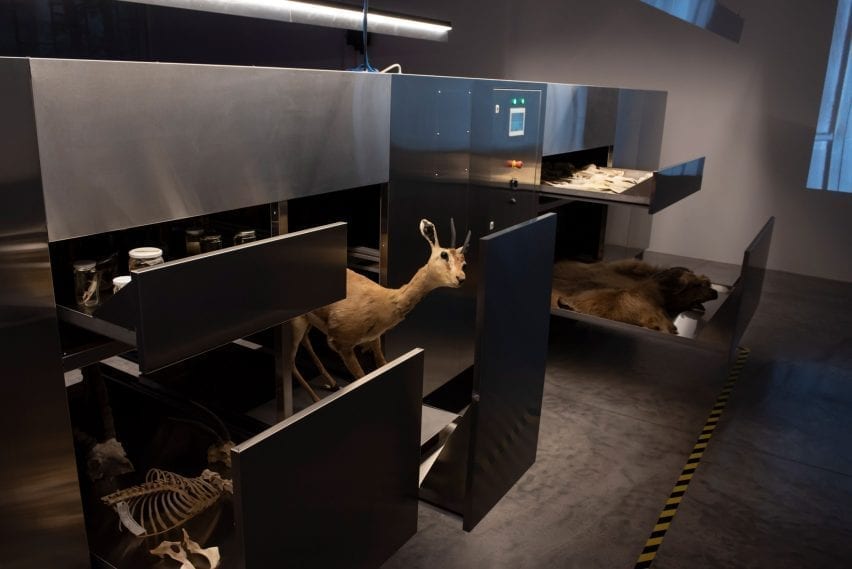
Called Every Living Creature that Moveth, the sound installation by sound designer Daniel Meir plays original recordings of bats, frogs, toads and grasshoppers.
Hasson explained how Land. Milk. Honey seeks to narrate the story of Israel's agricultural history through a zoo-centric analysis of the country, while also questioning our future relationship to the natural world.
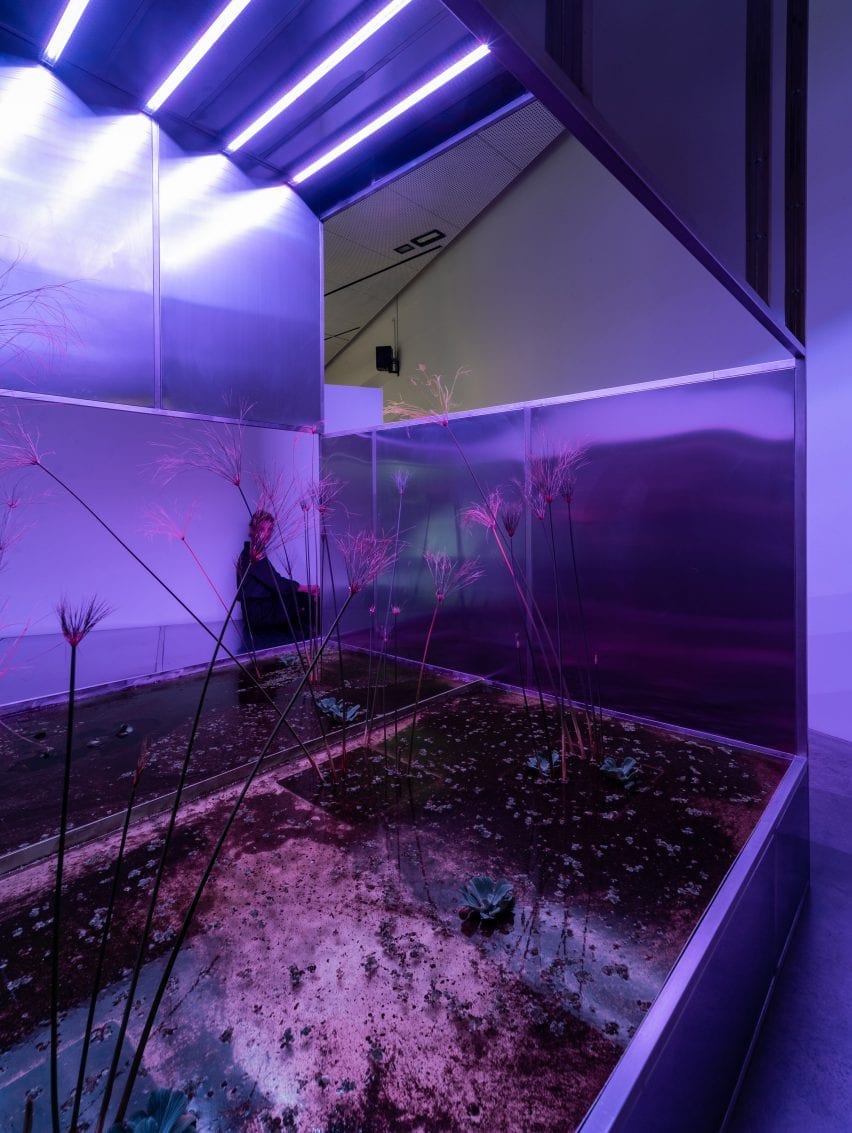
"We have tried to construct objects that will resonate with the research in a tangible way and go beyond theoretical study," concluded Hasson.
"By focusing on animals we examine in-depth political, cultural and environmental processes that have taken place in our region over the last century and a half, and analyse how politics, ideology and technological forces have shaped the world in which we live."
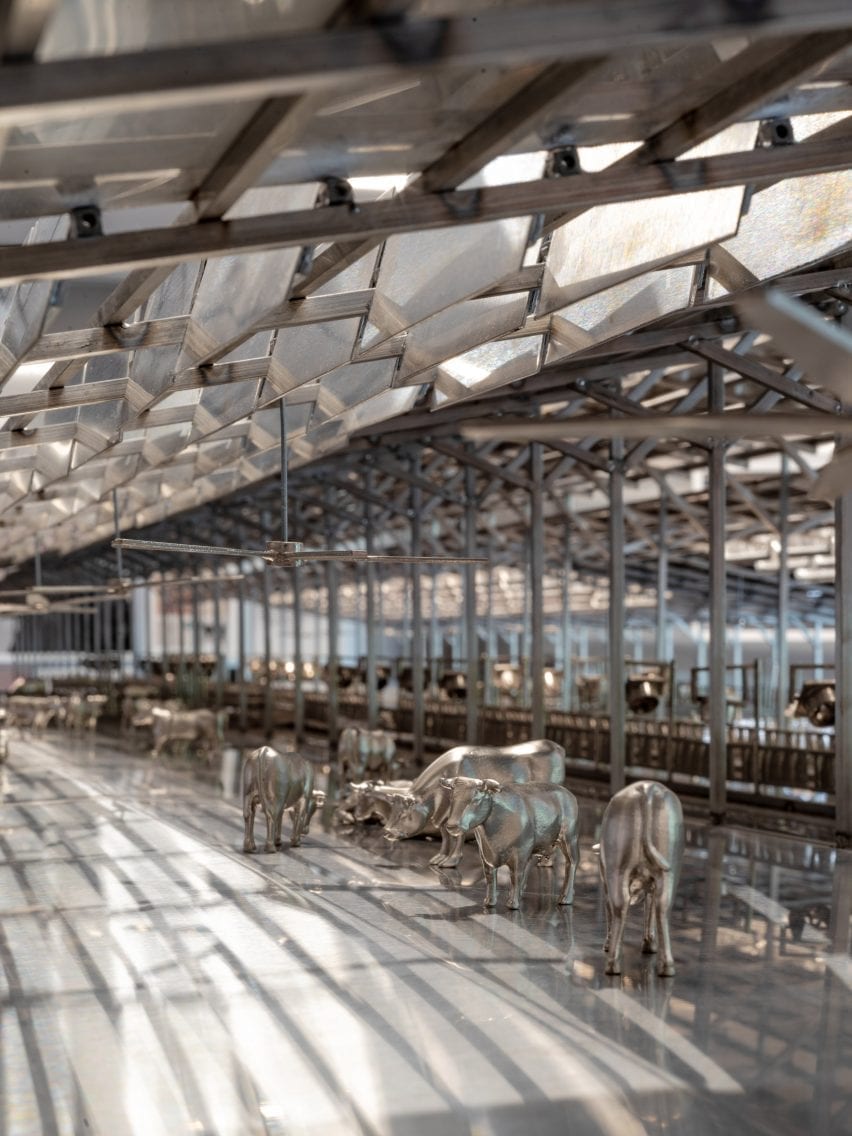
Land. Milk. Honey was commissioned by Michael Gov and Arad Turgeman, and is curated by Dan Hasson, Iddo Ginat, Rachel Gottesman, Yonatan Cohen and Tamar Novik.
Other pavilions at the Venice Architecture Biennale that address systems in nature include the Danish Pavilion by architecture studio Lundgaard & Tranberg Architects, which presents an installation that explores the circularity of water.
The photography is by Matteo Losurdo.
Land. Milk. Honey will be on display at the Giardini as part of The Venice Architecture Biennale, which takes place from 22 May to 21 November 2021. See Dezeen Events Guide for all the latest information you need to know to attend the event, as well as a list of other architecture and design events taking place around the world.